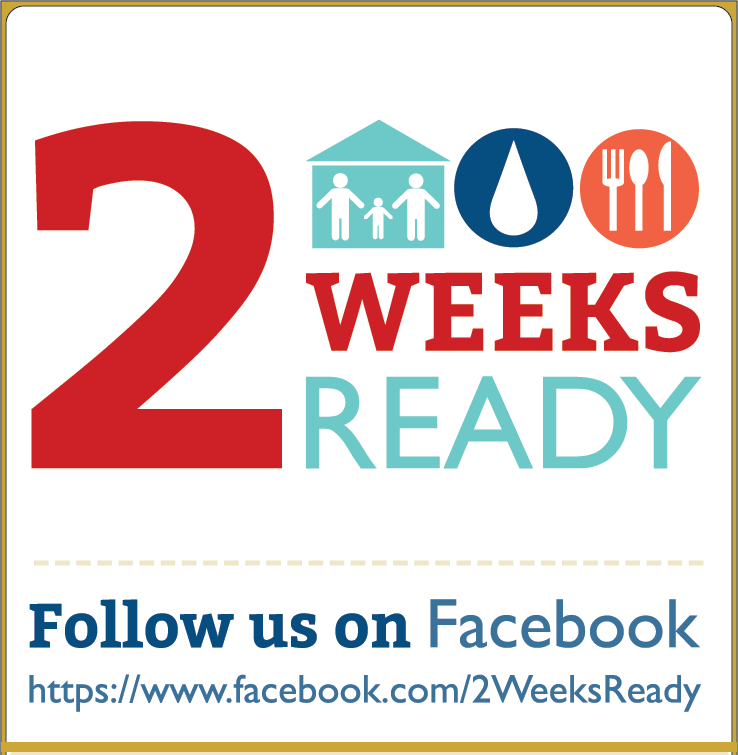Disaster Supply Kit | References
"I'm sorry to say so
but sadly, it's true
that bang-ups
and hang-ups
can happen to you."
~ Dr Seuss
Everyone Needs To Be Prepared To Survive
For 2 Weeks On Their Own Following A Disaster.
Include The Needs Of All Household Members.

 Build a disaster supply kit
Build a disaster supply kit
- Remember: you may need to shelter-in-place after some disasters
with limited (or no) access to utilities, stores and services,
e.g., wildfire, flood, several winter storms, earthquakes, ...;
after Cascadia earthquake, outside help may be 2-3 weeks away 
 Disaster Kits should contain items needed
Disaster Kits should contain items needed
for basic survival such as water, food, and first aid essentials.- For any items with batteries, periodically recharge or replace.

 Store in large, sturdy container or smaller portable ones
Store in large, sturdy container or smaller portable ones
-- generally, in dry, cool, dark (if possible) areas,
likely to be accessible after an earthquake, e.g.,
garage (w/ concrete floor); outdoor shed;
closets-- could you pry open jammed doors?
in tsunami zone, nearby rental storage unit uphill from you?

- 2-Week supply of non-perishable food
(dried fruit, canned tuna fish, peanut butter, etc.) - Can opener
- Paper plates, plastic cups and utensils, paper towels
- Moist towelettes, garbage bags
and plastic ties for personal sanitation - Water -- at least a gallon per person,
per day for drinking and hygiene
Purification (Flood: Sanitation) - First aid kit; Terri's List
- Prescription medication and glasses
- Sleeping bag or warm blanket for everyone in your family
- Change of clothes to last for at least 3 days,
including sturdy shoes; consider the weather where you live - Matches in a waterproof container
- Toothbrush, toothpaste, soap and other personal items
- Feminine hygiene supplies
- Fire extinguisher
- Wrench or pliers to turn off utilities
-- non-sparking (i.e., non-ferrous) for gas - Other suggestions: headlamps;
cable to charge devices from car battery / cigarette lighter;
...
- Household chlorine bleach (unscented)
- Dust mask (N95), and plastic sheeting and duct tape,
to help filter contaminated air - Battery-powered or hand-cranked NOAA radio
and extra batteries -- several: 1 for home, 1 to go?
some walkie-talkies (FRS) may include NOAA channels;
Be Informed: NOAA, FRS - Cell phone with charger, external battery pack or solar charger
- Whistle to signal for help
- Local maps
- Cash in small bills (ATMs may be empty or not work)
- Emergency reference material such as first aid book
or information from ready.gov - Important family documents such as copies of ID,
insurance policies, and bank records
in a waterproof, portable container - Infant formula and diapers
- Paper and pencil
- Books, games or puzzles
- Pet food, other supplies, and extra water for your pet
- Share resources among neighbors (i.e., MYN),
e.g., larger first aid kits; tools;
campstoves / outdoor grills;
generator & fuel (safely stored);
share woodstove / fireplace (if no heat);
...
 References
References
- Oregon Office of Emergency Management (OEM): 2 Weeks Ready, Facebook
- brochures: Business; Children; Communications; Community; First Aid; Food (Eng.; Span.);
Neighborhood Pets (Eng.; Span.); Seniors (Eng.; Span.); Shelter; Water (Eng.; Span.) - videos: 2 Weeks Ready Overview; First Aid; Food; Pets and Livestock; Secure Your Home;
Shelter; Water; Youth - earthquake resources: Safety Information; Living on Shaky Ground (Eng.; Span.)
 Jackson County: Preparedness Kit List home & car;
Jackson County: Preparedness Kit List home & car;
Preparedness Calendar: disaster supplies and preparedness activities over 12 months- ready.gov: List of Items for Preparing a Kit; Get Tech Ready; Preparedness Calendar
- redcross.org: How to Prepare for Emergencies; Emergency Preparedness Kit;
Resource Guide; Food and Water in an Emergency .pdf; w/ FEMA - CDC: Creating and Storing an Emergency Water Supply
- The Best Power Outage Tools and Supplies
Portable generator; Surge protector
Uninterruptible power supply;
USB battery pack for phones & tablets, laptops;
Portable power station; Power inverter; LED lantern
Flashlight; Headlamp; Board game; NYT; 2/21/2023 - How to Pick a Solar Panel and Battery Backup System NYT; 12/21/2022
- Your First Aid Kit May Be Expired LH; 7/15/2022
- The Best Emergency Gear to Keep at Home Wired; 6/12/2022
- The Best Portable Generators NYT; 3/24/2022
- How to Stock an Apocalypse Pantry LH; 5/3/2022
- The Best Power Outage Tools and Supplies NYT; 2/17/2022
- The Best Emergency Gear to Keep at Home
flashlight; lantern; water purifier; propane camp stove;
spare mattress; portable charger and radio; warm clothes;
your coffee fix; bathroom needs; generator (in certain circumstances);
other essentials; Wired; 2/16/2022 - Generator buying guide: What you need to know
generator safety, the different types of generators; CNet; 2/10/2022 - The Best Emergency Preparedness Supplies reviews; 12 essentials; NYT; 10/7/2020
- Earthquake preparedness: Where to store your emergency supplies 1/10/2019
- OLLI Course: Be Safer on the Internet: Backups: Disaster
Other Useful Kits: Go, Car, Under-the-Bed, Financial
- Go Bag -- see section: 3. Evacuation Planning
- Emergency Kit for your Car
- Under-the-Bed Kit -- see section: 8. Earthquake
- Emergency Financial First Aid Kit
